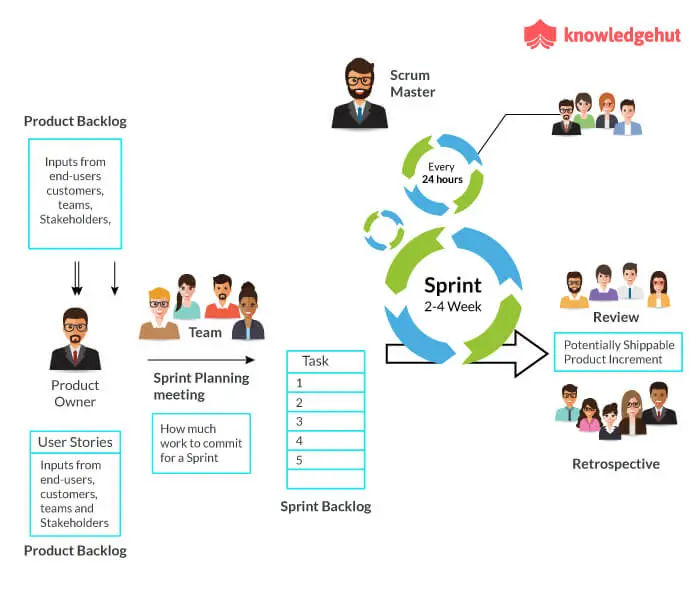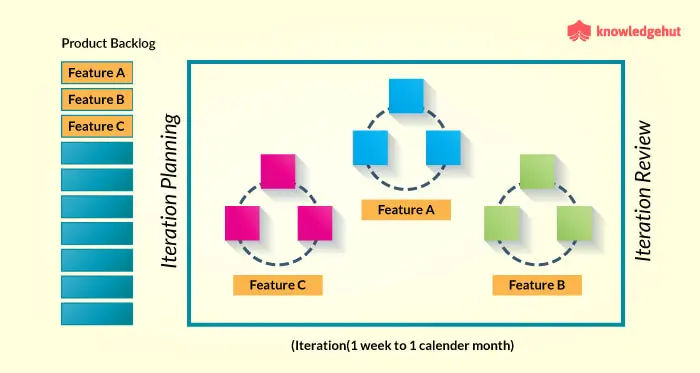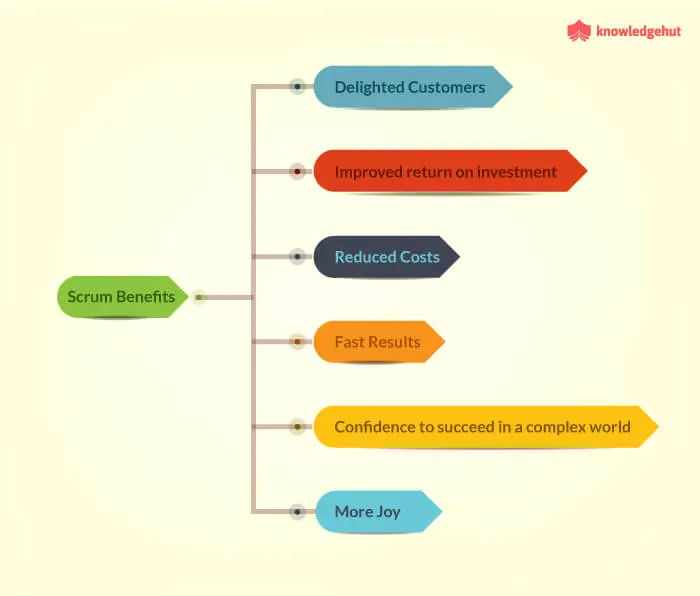- Blog Categories
- Project Management
- Agile Management
- IT Service Management
- Cloud Computing
- Business Management
- BI And Visualisation
- Quality Management
- Cyber Security
- Most Popular Blogs
- PMP Exam Schedule for 2025: Check PMP Exam Date
- Top 60+ PMP Exam Questions and Answers for 2025
- PMP Cheat Sheet and PMP Formulas To Use in 2025
- What is PMP Process? A Complete List of 49 Processes of PMP
- Top 15+ Project Management Case Studies with Examples 2025
- Top Picks by Authors
- Top 170 Project Management Research Topics
- What is Effective Communication: Definition
- How to Create a Project Plan in Excel in 2025?
- PMP Certification Exam Eligibility in 2025 [A Complete Checklist]
- PMP Certification Fees - All Aspects of PMP Certification Fee
- Most Popular Blogs
- CSM vs PSM: Which Certification to Choose in 2025?
- How Much Does Scrum Master Certification Cost in 2025?
- CSPO vs PSPO Certification: What to Choose in 2025?
- 8 Best Scrum Master Certifications to Pursue in 2025
- Safe Agilist Exam: A Complete Study Guide 2025
- Top Picks by Authors
- SAFe vs Agile: Difference Between Scaled Agile and Agile
- Top 21 Scrum Best Practices for Efficient Agile Workflow
- 30 User Story Examples and Templates to Use in 2025
- State of Agile: Things You Need to Know
- Top 24 Career Benefits of a Certifed Scrum Master
- Most Popular Blogs
- ITIL Certification Cost in 2025 [Exam Fee & Other Expenses]
- Top 17 Required Skills for System Administrator in 2025
- How Effective Is Itil Certification for a Job Switch?
- IT Service Management (ITSM) Role and Responsibilities
- Top 25 Service Based Companies in India in 2025
- Top Picks by Authors
- What is Escalation Matrix & How Does It Work? [Types, Process]
- ITIL Service Operation: Phases, Functions, Best Practices
- 10 Best Facility Management Software in 2025
- What is Service Request Management in ITIL? Example, Steps, Tips
- An Introduction To ITIL® Exam
- Most Popular Blogs
- A Complete AWS Cheat Sheet: Important Topics Covered
- Top AWS Solution Architect Projects in 2025
- 15 Best Azure Certifications 2025: Which one to Choose?
- Top 22 Cloud Computing Project Ideas in 2025 [Source Code]
- How to Become an Azure Data Engineer? 2025 Roadmap
- Top Picks by Authors
- Top 40 IoT Project Ideas and Topics in 2025 [Source Code]
- The Future of AWS: Top Trends & Predictions in 2025
- AWS Solutions Architect vs AWS Developer [Key Differences]
- Top 20 Azure Data Engineering Projects in 2025 [Source Code]
- 25 Best Cloud Computing Tools in 2025
- Most Popular Blogs
- Company Analysis Report: Examples, Templates, Components
- 400 Trending Business Management Research Topics
- Business Analysis Body of Knowledge (BABOK): Guide
- ECBA Certification: Is it Worth it?
- How to Become Business Analyst in 2025? Step-by-Step
- Top Picks by Authors
- Top 20 Business Analytics Project in 2025 [With Source Code]
- ECBA Certification Cost Across Countries
- Top 9 Free Business Requirements Document (BRD) Templates
- Business Analyst Job Description in 2025 [Key Responsibility]
- Business Analysis Framework: Elements, Process, Techniques
- Most Popular Blogs
- Best Career options after BA [2025]
- Top Career Options after BCom to Know in 2025
- Top 10 Power Bi Books of 2025 [Beginners to Experienced]
- Power BI Skills in Demand: How to Stand Out in the Job Market
- Top 15 Power BI Project Ideas
- Top Picks by Authors
- 10 Limitations of Power BI: You Must Know in 2025
- Top 45 Career Options After BBA in 2025 [With Salary]
- Top Power BI Dashboard Templates of 2025
- What is Power BI Used For - Practical Applications Of Power BI
- SSRS Vs Power BI - What are the Key Differences?
- Most Popular Blogs
- Data Collection Plan For Six Sigma: How to Create One?
- Quality Engineer Resume for 2025 [Examples + Tips]
- 20 Best Quality Management Certifications That Pay Well in 2025
- Six Sigma in Operations Management [A Brief Introduction]
- Top Picks by Authors
- Six Sigma Green Belt vs PMP: What's the Difference
- Quality Management: Definition, Importance, Components
- Adding Green Belt Certifications to Your Resume
- Six Sigma Green Belt in Healthcare: Concepts, Benefits and Examples
- Most Popular Blogs
- Latest CISSP Exam Dumps of 2025 [Free CISSP Dumps]
- CISSP vs Security+ Certifications: Which is Best in 2025?
- Best CISSP Study Guides for 2025 + CISSP Study Plan
- How to Become an Ethical Hacker in 2025?
- Top Picks by Authors
- CISSP vs Master's Degree: Which One to Choose in 2025?
- CISSP Endorsement Process: Requirements & Example
- OSCP vs CISSP | Top Cybersecurity Certifications
- How to Pass the CISSP Exam on Your 1st Attempt in 2025?
- More
- Tutorials
- Practise Tests
- Interview Questions
- Free Courses
- Agile & PMP Practice Tests
- Agile Testing
- Agile Scrum Practice Exam
- CAPM Practice Test
- PRINCE2 Foundation Exam
- PMP Practice Exam
- Cloud Related Practice Test
- Azure Infrastructure Solutions
- AWS Solutions Architect
- AWS Developer Associate
- IT Related Pratice Test
- ITIL Practice Test
- Devops Practice Test
- TOGAF® Practice Test
- Other Practice Test
- Oracle Primavera P6 V8
- MS Project Practice Test
- Project Management & Agile
- Project Management Interview Questions
- Release Train Engineer Interview Questions
- Agile Coach Interview Questions
- Scrum Interview Questions
- IT Project Manager Interview Questions
- Cloud & Data
- Azure Databricks Interview Questions
- AWS architect Interview Questions
- Cloud Computing Interview Questions
- AWS Interview Questions
- Kubernetes Interview Questions
- Web Development
- CSS3 Free Course with Certificates
- Basics of Spring Core and MVC
- Javascript Free Course with Certificate
- React Free Course with Certificate
- Node JS Free Certification Course
- Data Science
- Python Machine Learning Course
- Python for Data Science Free Course
- NLP Free Course with Certificate
- Data Analysis Using SQL
A Definitive Guide To Understanding Essential Scrum Processes
By Lindy Quick
Updated on Aug 03, 2018 | 6 min read | 10.3k views
Share:
Table of Contents
There is no one who is working on software development or any related field and didn't hear about the Agile methodology and its benefits over traditional software development like the Waterfall method.
Agile allows us to collect feedback about the product which we developed and its feature very early from the customer or management so we can make changes, defect repair or add a new feature to the product. Also, we always give the customer or management the most valuable features first before the less valuable features. These principles allow Agile teams to always introduce a valuable and shippable product. Agile has many frameworks that implement Agile principles but in different ways. The most popular among these frameworks are Scrum, XP, and Kanban.
We will talk about the Scrum framework in many articles that will show its value, principles, and activities to facilitate it and give us some ways to implement all of these in real life.
We will begin with this article as an introduction to Scrum and its main overview and benefits. So let’s begin.
The State of Scrum Report 2017-2018 represents how Organizations are implementing Scrum within their company. Below is the diagrammatic view of Scrum usage.
What Is Scrum?
As described in "Essential Scrum: A Practical Guide to the Most Popular Agile Process" book by Kenneth S. Rubin:
Scrum is an Agile approach to developing innovative products and services. But when we want to implement Scrum, we can't depend on a definition, and we must depend on specific steps. So let us show in a high-level description all the necessary steps (you should remember that this is an introduction to Scrum).
We will show all of these in detail in the next articles :
Insider Tips to Land Your Dream Scrum Master Job
Includes Scrum Resume Sample

- Creating a Product Backlog: A prioritized list of the features and other capabilities needed to develop a successful product.
- Prioritize the backlog items, important or highest-priority items first.
- Begin with the feature that can be completed even if it is low-priority than other features that we can’t complete within that sprint.
- Collect some items from the backlog by implementing conditions on steps 2 and 3 and put them on a time box called sprint. We must select items that are suitable to our
- Capacity of work in one sprint (we will talk in the next articles about sprint planning and velocity).
- The work is done in sprints that can be between 1 week and 4 weeks, but the most popular is the 2-week sprint.
- In any sprint, we do all the work that allows us to produce a shippable product which is a product with completed and working features, so we perform designing, development, testing and so on on the same sprint.
- At the end of the sprint, we conduct two activities: a review meeting and a retrospective meeting that we will describe below-
a) Review meeting or a Demo:- In this meeting, we show our shippable product, which has been ‘done’ in the sprint and collect feedback from stakeholders and perform any changes on existing features or requests for a new feature. Some books give a specific duration, such as two hours on a two weeks sprint to these activities. But in my real life, some demos didn't take my team more than 20 minutes.
b) Retrospective meeting: The team discusses the work of the sprint and what went right so they can use it in the upcoming sprints. They also discuss ‘what went wrong’ so they can avoid it and think of ‘what can be done’ to improve work and cooperation between the team. It also can be short, and you shouldn't make it more than half an hour, even though a lot of books say it can also be about two hours on a two weeks sprint.
What are Scrum Phases?
Scrum phases, also referred to as scrum lifecycle phases, are the sequential stages that form the foundation of the Scrum framework in agile project management. These phases provide structure and guidance to teams, enabling them to effectively plan, execute, and review their work. The phases are designed to facilitate collaboration, communication, and continuous improvement throughout the project. By adhering to the scrum processes embedded within each phase, teams can streamline their workflow, prioritize tasks, monitor progress, and adapt to changing requirements. The scrum lifecycle phases ensure that projects are managed in an iterative and incremental manner, promoting transparency and delivering value to stakeholders. Whether it's sprint planning, execution, or review, each phase has a distinct purpose and contributes to the overall success of the project. Understanding and implementing these phases are essential for teams to achieve their project goals efficiently and effectively.
Scrum Phases
Scrum is a popular project management framework that follows a series of phases to ensure successful and efficient software development. Let's explore each phase in simple language:
Initiation
The Initiation phase sets the stage. It's where the product vision is established, the Scrum team is formed, and stakeholders are identified. An initial product backlog is developed, outlining the project's key features and requirements.
Planning and Estimation
Planning and Estimation involve prioritizing the product backlog items. The Scrum team estimates the effort each backlog item would take, creating a balanced and achievable plan for the upcoming sprint.
Implementation
During the Implementation phase, the team gets to work. They start developing the prioritized items from the sprint backlog, progressing through designing, coding, testing, and debugging.
Reviewing
Reviewing comes after each sprint. In the Sprint Review, the team demonstrates the completed work to the Product Owner, and stakeholders gather feedback and adjust future plans accordingly.
Releasing
The Releasing phase involves delivering the completed increments to the customers. Feedback is collected and fed back into the Scrum cycle, enhancing and improving the product in successive sprints.

What are the Benefits of Using Scrum Phases in Project Management?
As was mentioned by Kenneth S. Rubin in his book "Essential Scrum: A Practical Guide to the Most Popular Agile Process", there are a lot of benefits coming from using Scrum in our work. These agile phases provide a structured framework that improves project efficiency and outcomes.
1-Delight Customers:
At the beginning of any product lifecycle, the requirements are not clear enough, and sometimes there are a lot of requirements that the customer himself does not know well at this early time. So by using Scrum, we always show the customer a working product and collect his feedback. So, in the end, we find that all requirements of the customer are met in the final product.
2-Improve Return on Investment:
We don't have to wait till the end of product development to gain a return on investment. We gain a return on investment with every release
3-Improve Time Management:
Efficient time management is another advantage of Scrum phases. Each phase, known as a sprint, has a defined timeframe. This timeboxing approach helps teams prioritize tasks and allocate resources effectively. By working within specific time constraints, projects are delivered in a timely manner, preventing delays and optimizing productivity.
4- It allows continuous improvement:
It also encourages continuous improvement. At the end of each phase, teams reflect on their performance, identify areas for enhancement, and implement changes accordingly. This iterative process allows for ongoing learning and refinement, resulting in continuous growth and better project outcomes.
5-Reduce Costs :
We can reduce costs by eliminating waste and dysfunction steps.
6-Fast Results:
The scrum sprint is short, between 1 week and 4 weeks as often. At the end of each sprint, we deliver working, integrated, tested, business-valuable features. So the result comes very fast.
7- Confidence to succeed in a complex world :
In the real world, we deal with many parties such as competitors, customers, users, regulatory bodies, and other stakeholders, and we always must take quick and suitable actions such as changing some requirements, adding some new features, using new technologies or improving the quality standards to achieve stakeholders’ satisfaction and to provide a competitive product.
8- More Joy :
It fosters collaboration and transparency among team members, ensuring that everyone understands their roles and responsibilities. This facilitates effective communication and teamwork, leading to increased productivity and better results.
Looking for the best PRINCE2 Practitioner course? Look no further. Our comprehensive online course is designed to provide you with the skills and knowledge necessary to excel in project management. Enroll now and take the first step towards a rewarding career.
The below figure shows the Scrum benefits.

Conclusion
In conclusion, understanding Scrum phases and processes is integral to effective project management in today's complex environments. Initiation aligns the team's objectives while Planning and Estimation prioritize the tasks. During the Implementation phase, these tasks transform into concrete product features. Reviewing guarantees the work aligns with the product vision, and Releasing provides the product to end users. By comprehending these essential Scrum phases and processes, teams not only enhance their productivity and deliver high-value products but also bolster their ability to adapt swiftly to changes, emphasizing the indispensability of Scrum in modern project landscapes.
Frequently Asked Questions (FAQs)
1. What is the Scrum lifecycle?
2. What are the 3 principles of agile?
3. What are the 4 levels of SAFe agile?
Get Free Consultation
By submitting, I accept the T&C and
Privacy Policy
Ready to lead with Scrum expertise?



